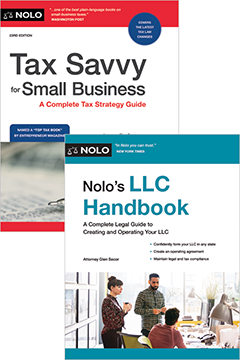Contracts can be complicated. Here are three tools you can use to make them simpler and more manageable.
Over the years, lawyers have developed many ways of making contracts more efficient structurally. One such approach is to add attachments to contracts in the form of either exhibits, schedules, or addendums. The primary contract is referred to as a "definitive agreement" and the attachments are referred to as "ancillary documents."
This article will address the creative ways that you can make your contracts more user-friendly while also planning for future add-on provisions.
Understanding Contract Attachments vs. Amendments
None of the ancillary documents—exhibits, schedules, and addendums—relate to contract amendments. Amendments are intended to modify the terms of a definitive agreement. The ancillary documents are meant to add more information and context to the definitive agreement to promote an understanding of the terms of the definitive agreement. (If you'd like to change some terms of your agreement, check out our sample amendment to contract.)
It's also important to note that agreements frequently use the terms exhibit, schedule, and addendum interchangeably (as well as the term "annex"). This general mixing of terminology is acceptable, so long as you understand the specific purposes that these attachments are meant to serve in the agreement you're considering. This article discusses the most common uses of this terminology.
Schedules
Unlike exhibits and addendums (discussed below), schedules are considered to be a substantive part of the definitive agreement itself. Schedules, sometimes referred to as "appendices," are used to attach information at the end of the contract that would be too confusing or cumbersome to include in the main body of the agreement.
Schedules often take the form of lists or descriptions of information.
The following is an example of how you can reference a schedule in a definitive agreement: "A true and complete list of the company's customers is set forth on Schedule [_] attached hereto."
Exhibits
Exhibits aren't considered to be part of the definitive agreement. Exhibits are typically viewed as samples (also known as "specimens") of documents that the parties intend to either execute or deliver at some point in the future.
An exhibit can be any document that the parties anticipate will be necessary to fulfill the intent of the definitive agreement. Examples of common exhibits include:
- instruments
- notices, and
- stand-alone agreements.
Exhibits are considered to be samples because they reflect final versions of documents that the parties intend to use at some point, but will not be signed or delivered until the appropriate time.
Exhibits tend to fall into two categories.
Ordinary boilerplate documents. The first type of exhibits are boilerplate documents that one party expects the other party to sign as a matter of course, with little to no negotiation involved. For example, companies regularly attach exhibits to the employment agreements of new hires. These might be specimens of the employer's standard nondisclosure agreement, proprietary rights agreement, tax forms, benefits forms, and the like.
It's common for the terms of various employment agreements to vary widely (with respect to salary, benefits, and so forth) because each of them has been heavily negotiated. On the other hand, the company can expect for employees to readily sign the exhibits as-is (with little or no modification) as part of the company's routine hiring process.
Negotiated stand-alone agreements. The second category of exhibits relates to stand-alone, ancillary agreements that the parties fully negotiate. For example, these types of exhibits are commonly used in the context of the sale of a business. In that case, the definitive agreement might include exhibits for a transition services agreement, a shareholders' agreement, a counsel opinion, landlord estoppels, consulting agreements, and so forth.
Even though the parties might not actually sign these stand-alone agreements until later, the two sides discuss and finalize the exhibits ahead of time, and attach them to the definitive agreement, so that there are no future disputes when it comes time for execution and delivery.
The following is an example of how you can reference an exhibit in a definitive agreement: "On the Closing Date, each of the Buyer and the Seller shall execute a Transition Services Agreement substantially in the form of Exhibit [_] attached hereto."
Addendums
Addendums, also known as "supplements," aren't considered to be part of the definitive agreement. However, a definitive agreement can reference addendums as placeholders for future information.
For example, master services agreements (MSAs) frequently use addendums in the form of work orders (sometimes called "statements of work") for new projects. In other words, an MSA covers the general terms of the agreement between the parties, but it'll also indicate that the parties will subsequently attach the terms of each new project to the main agreement as addendums.
In some cases, the MSA could attach a specimen of a work order as an exhibit to the definitive agreement. Then, the parties would use this exhibit as the standard form for each work order that they add as an addendum in the future.
Note that addendums are often preferable to amendments, which are usually more complicated to draft because they substantively modify the terms of the original contract.
The following is an example of how you can reference an addendum in a definitive agreement: "In the event the parties mutually agree to any additional Services to be provided by the Company hereunder, the parties shall negotiate and execute a Statement of Work in connection therewith and attach each such Statement of Work to Addendum [_] hereto."



